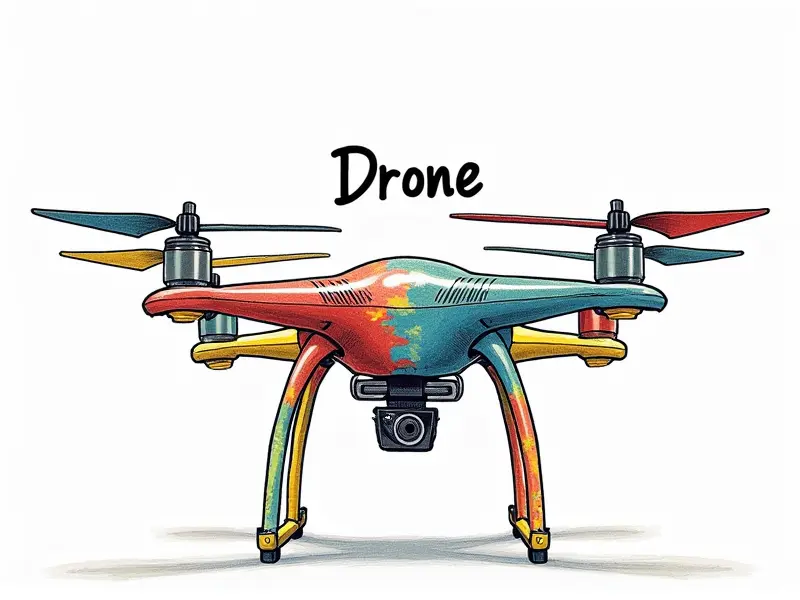Best materials for DIY drones

Best Materials for DIY Drones
Building your own drone can be an exciting and rewarding project. Whether you're looking to create a lightweight racing drone or a sturdy quadcopter, selecting the right materials is crucial for performance and durability. This article will guide you through the best materials for DIY drones, essential components, budget-friendly options, and more.
Top Materials for DIY Drone Construction
The choice of materials can significantly impact your drone's performance and longevity. Here are some top picks:
- Carbon Fiber: Known for its strength-to-weight ratio, carbon fiber is ideal for frames.
- Aramid Fibers (Kevlar): Offers excellent durability and flexibility.
- Glass Fiber: Provides a balance between cost and performance.
- Aluminum: Durable and lightweight, suitable for structural components.
- Polypropylene: Flexible and impact-resistant plastic ideal for prop guards.
Essential Components for Building Drones
To build a functional drone, you need more than just materials. Here are the key components:
- Flight Controller: The brain of your drone that controls flight dynamics.
- Battery: Power source for motors and electronics.
- Motors & Propellers: Drive the movement and stability of your drone.
- ESC (Electronic Speed Controller): Regulates motor speed based on input signals.
- Radio Transmitter/Receiver: Controls your drone from the ground.
- Cameras & Gimbals: For capturing high-quality footage and FPV (First Person View).
Best Budget-Friendly Drone Materials
If you're on a tight budget, there are still ways to build a quality drone without breaking the bank. Consider these materials:
- Plywood: Economical and easy to work with.
- Balsa Wood: Lightweight but fragile; great for prototypes.
- MDF (Medium Density Fiberboard): Affordable and durable, though heavier than other options.
- PVC Pipe: Versatile and inexpensive material.
- ABS Plastic Sheets: Durable and lightweight; suitable for custom parts.
Lightweight Materials for DIY Drones
To achieve optimal flight performance, especially in racing drones, weight is a critical factor. Here are some of the lightest materials available:
- Carbon Fiber Sheets: Extremely lightweight and strong.
- Kevlar Fibers: Offers high strength-to-weight ratio.
- Laminated Balsa Wood: Lightweight with good structural integrity.
- Polyethylene (PE): Very light and flexible plastic.
- Titanium: Though expensive, it's incredibly lightweight for its strength.
Strongest Materials for DIY Quadcopters
If durability is your primary concern, these materials will ensure your drone stands up to rigorous use:
- Titanium: Exceptional strength and corrosion resistance.
- Aramid Fibers (Kevlar): High impact resistance and flexibility.
- Ceramic Composites: Extremely durable but brittle; use with care.
- Tungsten Carbide: One of the hardest materials known, though very heavy.
- Boron Fibers: Offers high tensile strength and stiffness.
Must-Have Tools for DIY Drone Builders
To build a drone from scratch, you'll need an array of tools. Here are some essentials:
- Soldering Iron & Solder: For electronic component assembly.
- Cutting Tool (Jigsaw or Dremel): To cut materials precisely.
- Hole Saw Set: Useful for drilling precise holes in frames and plates.
- Hot Glue Gun: Great for quick, temporary fixes during construction.
- Multimeter: To test electrical connections and components.
- Screwdrivers & Allen Keys: For assembling hardware parts.
High-Quality Materials for FPV Racing Drones
For those interested in competitive racing, these materials will help you build a high-performance drone:
- Carbon Fiber Sheets: Ideal for lightweight and strong frames.
- Boron Fibers: Provides excellent stiffness and strength.
- Titanium Screws & Bolts: Durable fasteners that won not rust.
- Nylon Propellers: Lightweight yet robust, perfect for high-speed flights.
- Battery Straps (Velcro or Rubber Bands): Secure battery packs during intense maneuvers.
Ultimate Kit for Building Your Own Drone
To streamline your drone-building process, consider purchasing a comprehensive kit. These kits typically include:
- Frame Kit: Includes all necessary frame components and fasteners.
- Motor & Propeller Set: High-performance motors with matching propellers.
- Battery Pack: A reliable power source for extended flight times.
- ESC & Flight Controller Bundle: Pre-programmed and compatible components.
- Cameras & Gimbals: For capturing high-quality video footage.
Metal vs. Plastic in DIY Drones
The choice between metal and plastic largely depends on your specific needs:
- Metal Frames (Aluminum, Titanium): More durable but heavier; ideal for heavy-duty use.
- Plastic Frames (Carbon Fiber, Kevlar): Lighter and more flexible; better suited for racing drones.
Battery Straps & Mounts
To secure your battery pack safely during flight:
- Velcro Battery Straps: Easy to install and adjust, though less durable than other options.
- Rubber Band Straps: Provide a snug fit but may require frequent replacement.
- Screw-On Mounts: More secure but can be cumbersome to install.
Conclusion
Building your own drone is an exciting and rewarding endeavor. By choosing the right materials and tools, you can create a custom drone tailored to your specific needs and preferences. Whether you're looking for lightweight performance or robust durability, there's a material out there that will help you achieve your goals.
Frequently Asked Questions
- What is the best material for a drone frame?
- The answer depends on whether you prioritize weight or strength. For racing drones, carbon fiber or Kevlar offers an excellent balance of both.
- How do I secure my battery pack during flight?
- Use Velcro straps for easy installation and adjustment, or rubber bands for a snug fit. Screw-on mounts provide the most secure option but can be harder to install.
- What tools do I need to build a drone from scratch?
- A basic toolkit including soldering iron, cutting tool, multimeter, screwdrivers, and hot glue gun will cover most of your needs.
- Is it better to buy a kit or build my own drone from individual parts?
- If you're new to building drones, starting with a kit can be less overwhelming. As you gain experience, customizing your build becomes more rewarding.

